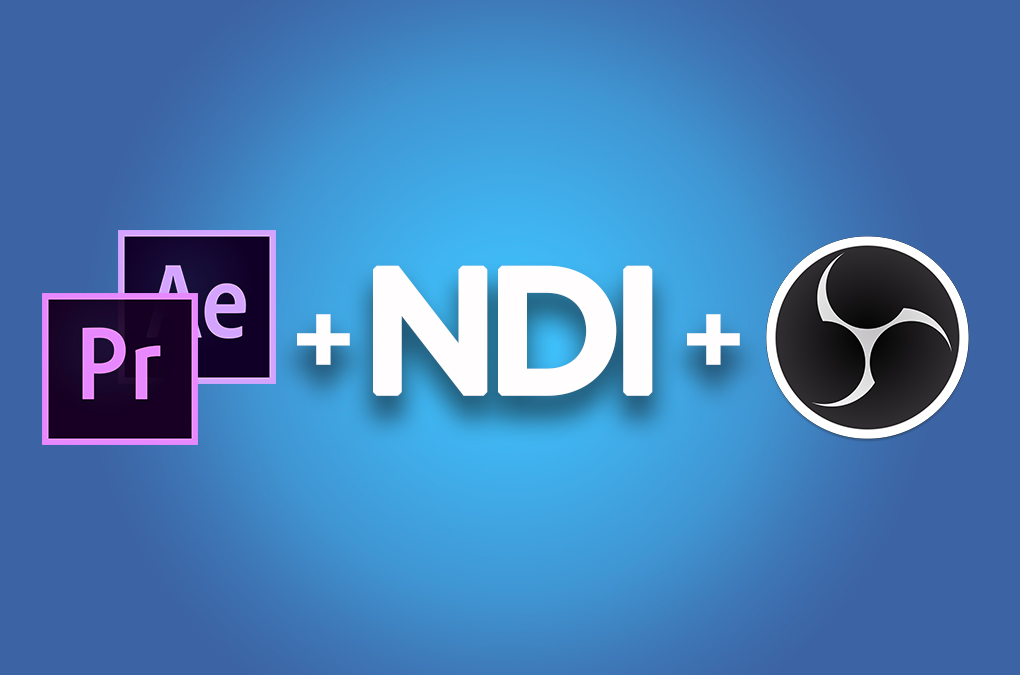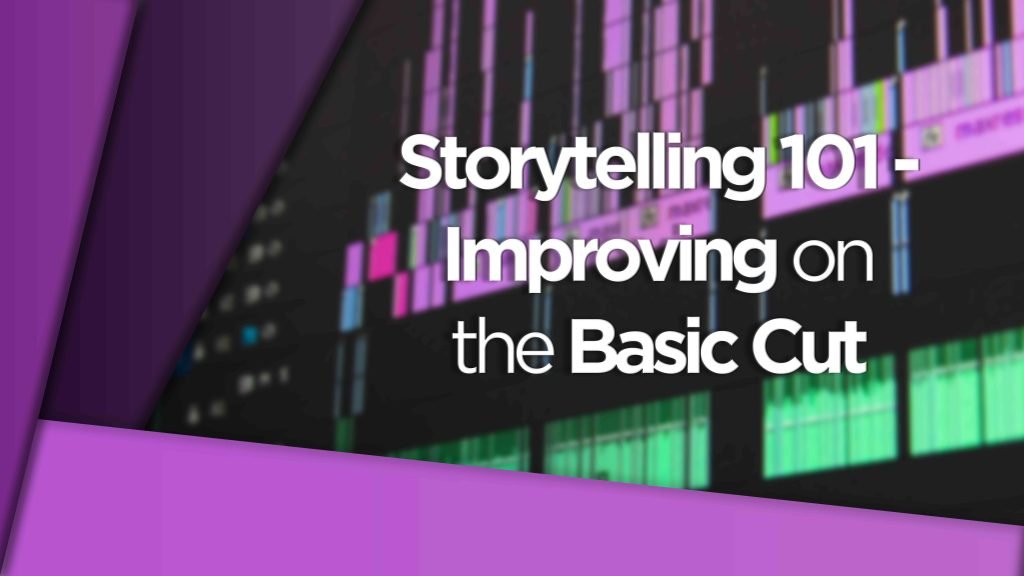NDI For Adobe Creative Cloud and the OBS NDI Plugin
NDI integration with Premiere Pro and After Effects is nothing short of magic for streamers and larger broadcast studios with tight deadlines!
Magic seems a bit of a stretch, no?
You could say that but I’m going to show you how transformative it really is.
This article and many others like it (not published) can be found in our eBook ‘Your Guide to NDI’. The eBook offers and introduction and thorough walkthrough of all the ways you could integrate NewTek NDI into your digital video and audio workflows. Get a copy right here.
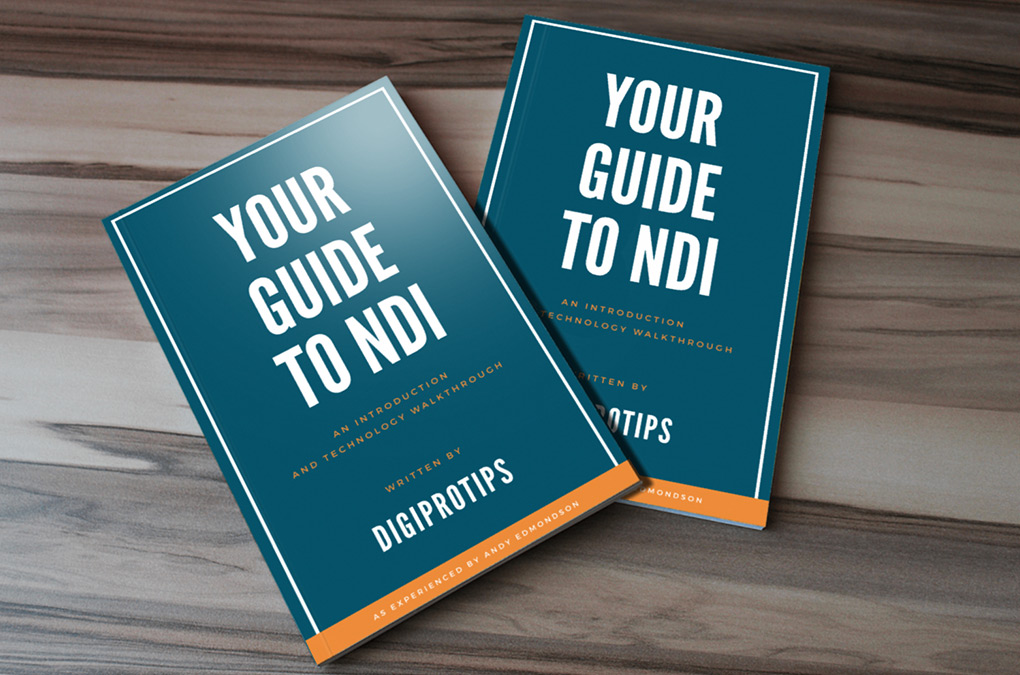
How do I know what I’m talking about? Head to the DigiProTips Experience and Background page to find out how I’ve built up my knowledge over a career spanning feature film, broadcast TV and digital content production.
Watch the Video
NewTek NDI

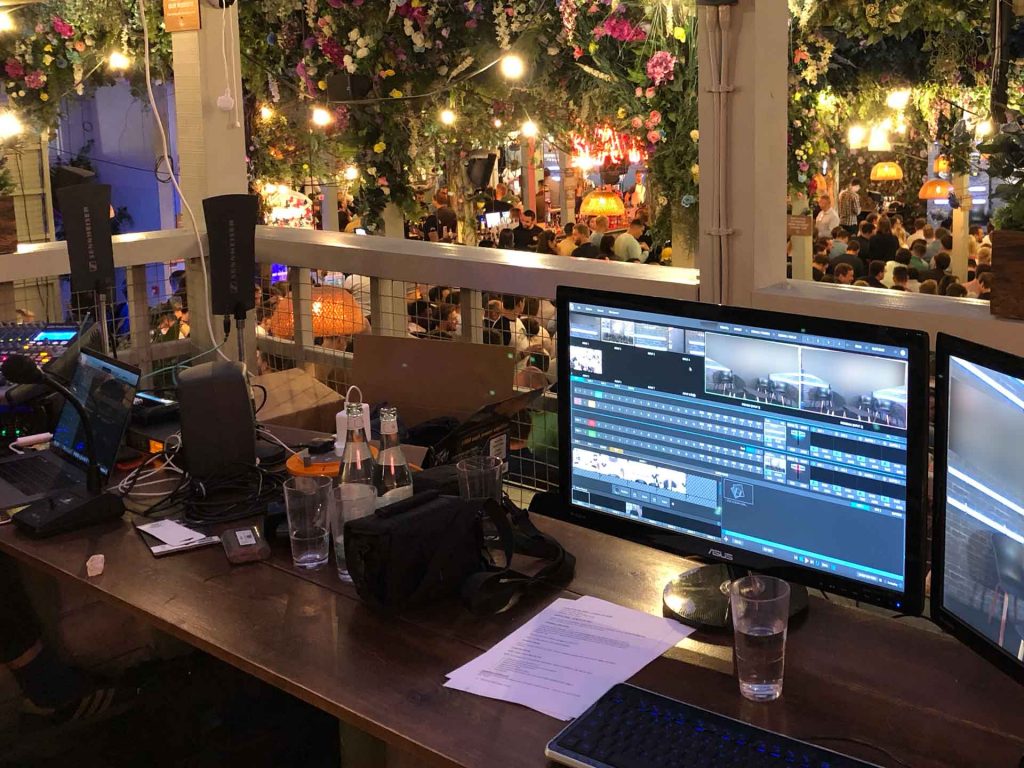

If you are new to NDI (and what it even stands for) then it’s worth checking our shorter online guide here or taking a deeper dive in our eBook available here. For now though, all you need to know is that NDI stands for ‘Network Device Interface’ and it is essentially a way of transmitting video and audio data wirelessly, over your LAN (Local Area Network).
These signals, which usually are carried by HDMI & SDI signals, can now be sent using an Ethernet cable or wirelessly via WiFI. To add to this impressive technology, it also has incredibly low latency and can be used with HD or UHD video signals.
NDI For Adobe Creative Cloud
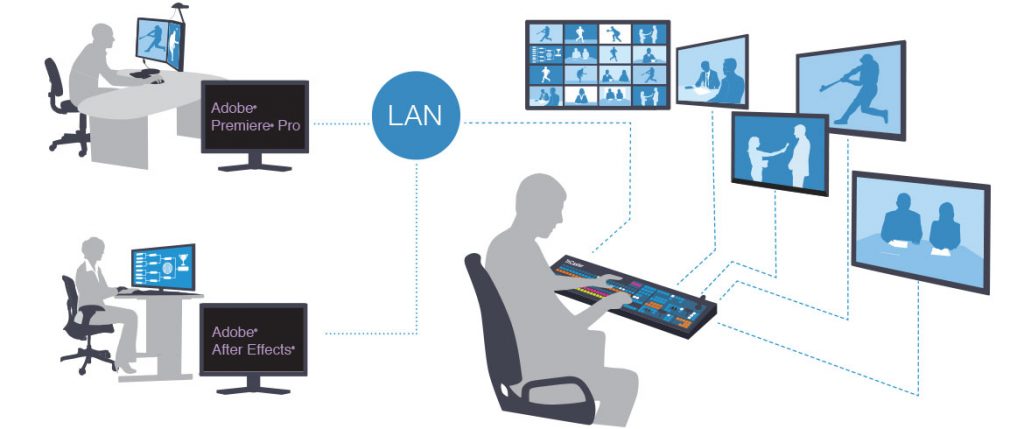
NDI has been around for a number of years now and so the amount of possible integrations have grown rapidly. NDI for Adobe Creative Cloud is one of the most useful technology innovations for streamers and TV studios alike.
Where before you used to have to create, export and then ingest material from Premiere Pro or After Effects, you can now transmit your timeline instantly and wirelessly with the NewTek NDI integration for Adobe Creative Cloud.
That’s right, live and instantly!
For streamers that means they can use Premiere Pro or After Effects as a separate DDR to house as many media play outs or overlays as they wish. Jumping from timeline to timeline or having multiple clips in one timeline to play through, you can set up your own media playlist ready for going live on air.
Multiple DDRs/media players in the streaming software landscape are hard to come by and usually involve some sort of layer based structure. Not like the DDRs found in higher-end systems like NewTek Tricasters.

For TV studios this functionality is a real timesaver. Play outs, lower thirds and any other graphical effect using alpha channels always needed to be pre-rendered and ingested into the play out system previously. Now, editors can update projects on-the-fly and the director for the studio can pull them in instantly with no latency and no render, export, ingest workflow needed.
The ease with which the system can be set up and running also makes this a transformative workflow for every level of streamer/broadcaster.
What You Need to Get NDI for Adobe Creative Cloud
There’s really only two things you need to get set up with NDI for Adobe Creative Cloud. They are Adobe Premiere Pro/After Effects (obviously) and the NDI Tools package from NewTek.
As I’ve mentioned in previous posts and in the eBook, ‘Your Guide to NDI’, the NDI Tools package from NewTek is an absolutely must for anyone entering the world of NDI. It is free for a start and it also opens up a whole suite of options for video & audio routing using NDI.

Head to NDI.tv and download the NDI Tools package for either Windows or Mac. Once you have the pack downloaded you need to install the whole pack on Windows and on Mac you need to install the NDI for Adobe Creative Cloud package, however I highly recommend installing all of the packages in the tools folder.
Once the NDI for Adobe Creative Cloud plugin has been installed onto your system, you need to load up Adobe Premiere Pro or After Effects and head to the Preferences settings.
Once in Preferences head down to ‘Playback’. Here you should see a tick box called ‘Enable Mercury Transmit’. Check this box and then a previously greyed out box with available monitor outputs should become available to edit.
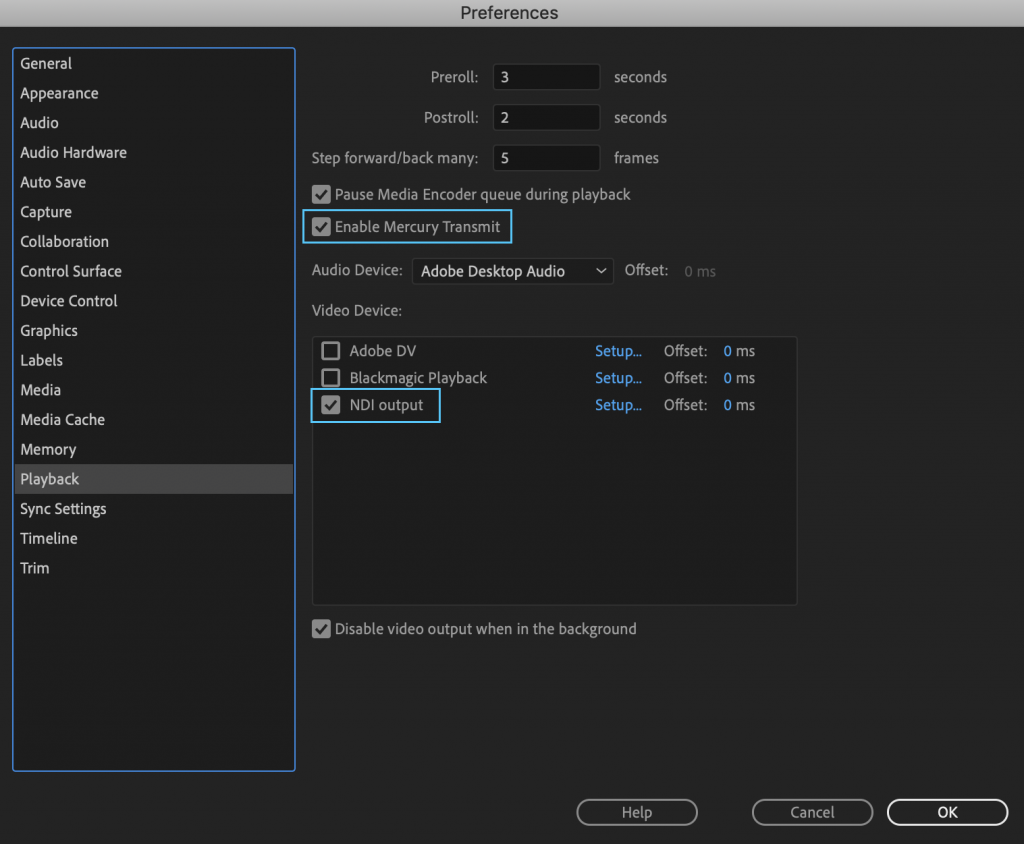
In this box you should see the option for ‘NDI Output’. Check the box next to it to enable NDI Output for Adobe Premiere Pro or After Effects.
And that is literally all that you need to do in the Adobe side of things to get NDI output up and running.
OBS NDI Plugin
Now that we have NDI for Adobe Creative Cloud up and running we need to look at the OBS Studio side of the workflow.
You can find out more about OBS NDI integration in our eBook but the first thing to note is that NDI isn’t an option that is natively available inside of OBS Studio, you have to install the OBS NDI plugin.
To get the OBS NDI plugin head here and download the latest release from GitHub.

Install the OBS NDI Plugin for OBS Studio and then restart the software.

Next, add a new NDI source, you should now see the option to choose either Premiere Pro or Affects in the source options.
If you don’t see these options, reboot your PC(s) and open back up the Adobe software and your media switching software and repeat the process. If you still don’t see the options then you may need to Google ‘NDI Runtime’ and download the latest runtime for NDI and install that. The runtime should come with the NDI tools package but sometimes it fails to install correctly.
I should also note that all PCs need to be on the same local network for this to work.
Getting the Most Reliable Setup
This workflow will work on all local LAN set ups but reliability should be an important factor in your production.
NDI has been created to utilise the least amount of resources but with the best possible results in quality. That being said there are still ways within which you can improve the chances that you never get jittery or pixelated footage coming through from your Adobe timelines.
To create a foolproof NDI for Adobe Creative Cloud production workflow we need to look at our network set up. As NDI works within your network and is dictated by bandwidth it’s here that we want to focus our energy and investment into getting the best possible set up for this workflow.
DISCLAIMER: This post may contain affiliate links. We make a small commission if you buy the products from these links (at no extra cost to you). As an Amazon Associate, I earn from qualifying purchases. But we only recommend products we would use ourselves. For more information, click here to see our disclosures.
Note. If you are working solely on one PC set up with Adobe Premiere Pro or After Effects going straight into OBS Studio with no other computers involved then you can skip this section.
If you are working with two computers on the same local network then you will need to consider having your computers connected to a Gigabit network setup. Gigabit is standard in most consumer computers these days but WiFI generally aren’t. For the most reliable connection you need a gigabit desktop switch and at least Cat 5.e cabling to give you enough bandwidth capacity.
Connect each computer to the desktop switch via Ethernet and your internet connection to the switch too and you’ll be streaming out high-quality NDI enabled video in no time.
For bigger scale productions involving 4K video and multiple computers we need to move up to 10 Gigabit Ethernet setups. These are dearer but are a worthy investment for reliable 4K NDI production.
Each computer will need a 10GbE port for the setup to work. Some new high-end computers already feature these but most computers purchased over 2 years ago probably won’t. However, you can still add 10GbE by installing a 10GbE PCIe card or buying a USB-C to 10GbE adapter. Either will work fine.
Then you need a 10GbE switch with enough ports to connect all your NDI hardware to and also at least Cat6.a cabling to give yourself enough bandwidth capacity to pipe it all through.
You should then be set up for 4K NDI streams between computers and have enough bandwidth for all your other LAN and internet uses too.
And that’s pretty much it!
Once you have the software and hardware set up you are ready and raring to go.

All of the above and much more NDI related content can be found in our ebook, ‘Your Guide to NDI’. You can also receive a free sample copy by signing up to our newsletter here or at the bottom of this page.
DigiProTips

